Related: watch this amazing timelapse of the view last week from the International Space Station.

An X1.6 class solar flare flashes in the middle of the sun on Sept. 10, 2014. This image was captured by NASA’s Solar Dynamics Observatory and shows a blend of light from the 171 and 304 Angstrom wavelengths.NASA/GSFC/SD
The sun fired off two giant bursts of charged plasma in our direction earlier this week. They hit the Earth’s magnetic field Thursday night and midday Friday, creating strong geomagnetic storms that may cause disruptions to the world’s electric grids, GPS, and radio systems throughout the weekend.
THESE STORMS WON’T DO MUCH DAMAGE — BUT FUTURE SOLAR STORMS COULD
Fortunately, these solar storms aren’t expected to be catastrophic — and anyone living in the northern US or Canada might be able to see some colorful auroras on Friday night (see map below). But it is a reminder that the sun’s occasional eruptions are capable of wreaking havoc here on Earth.
Space experts have long warned that if a truly massive solar storm ever hit us — much bigger than the current one — it could knock out power grids across North America, leaving millions of people without electricity for months and causing widespread chaos. A storm that big hit Earth back in 1859(though there were no power grids then, just a bunch of telegraph wires that got frazzled), and we just barely missed getting blasted by a similar-sized solar eruption in 2012.
The recent solar eruptions are benign by comparison — though the fact that there were two of them arriving in such close proximity is unusual.
On September 9 and 10 of this week, two solar flares erupted from an active sunspot region, with the second being a large X1-class flare. Those flares sent two coronal mass ejections toward the Earth — that is, clouds of fast moving particles shot out of the sun’s outer atmosphere. Here’s a video of the X-class flare on September 10, courtesy of NASA:
The National Weather Service’s Space Weather Prediction Center has been tracking these ejections ever since.
SOLAR STORMS CAN INTERFERE WITH POWER GRIDS, GPS, AND RADIO SYSTEMS
The first reached Earth on Thursday night, creating a “moderate” G2 geomagnetic storm when it hit our planet’s magnetic field. (The scale goes from G1 to G5, with G5 being the strongest.) The second eruption hit Friday evening, and the interaction of the two events has created a strong G3 storm that’s expected to last for hours or even days.
These geomagnetic storms don’t harm people directly. But they can induce ground currents capable of overloading electric grids. They can also interfere with our GPS systems and force airplanes in polar regions to divert flights.
This weekend’s storms are expected to cause only modest disruptions, officials from the Space Weather Prediction Center said. Even so, power grid operators are standing by “just in case.”
On the upside, geomagnetic storms can also create brightly colored auroras in the skies. According to AccuWeather, people in northern states from Oregon to Maine may be able to see the nighttime show on Friday night (and possibly several evenings thereafter):
/cdn2.vox-cdn.com/uploads/chorus_asset/file/695176/aurora-map1.0.jpg)
Peak visibility is typically around midnight local time. And the map above could change throughout the night (so if you live below in an area with poor or no visibility, that doesn’t necessarily mean you’re out of luck, though there are no guarantees).
Friday update: Here’s an early sighting Friday night from Mount Washington Observatory in New Hampshire:
An aurora occurs as the charged particles from the sun travel along the Earth’s magnetic field in the upper atmosphere and collide with gas atoms, causing them to emit light. They appear fairly often in places like Alaska or Iceland, but it takes a strong storm to get auroras this far south.
This eruption is also a reminder that the sun is capable of some truly enormous flare-ups, and much stronger solar storms in the future could do some serious damage. In a worst-case scenario, a massive solar storm could leave 20 to 40 million people in the Northeast without power, according to a sober assessment last year by Lloyd’s of London.
A TRULY MASSIVE STORM COULD LEAVE 40 MILLION PEOPLE WITHOUT POWER
The good news is that we’re not totally helpless. As I’ve detailed before, businesses and government agencies have been devising plans to cope with disruptive space weather — from hardening power grids to rerouting flights that might get disrupted by geomagnetic storms. But even so, it’s hard to protect against a truly massive storm, and it doesn’t help that we’re about to lose some key observational satellites.
So here’s a rundown of why solar storms can cause so much trouble, how we might defend against them — and whether a big one might hit us anytime soon:
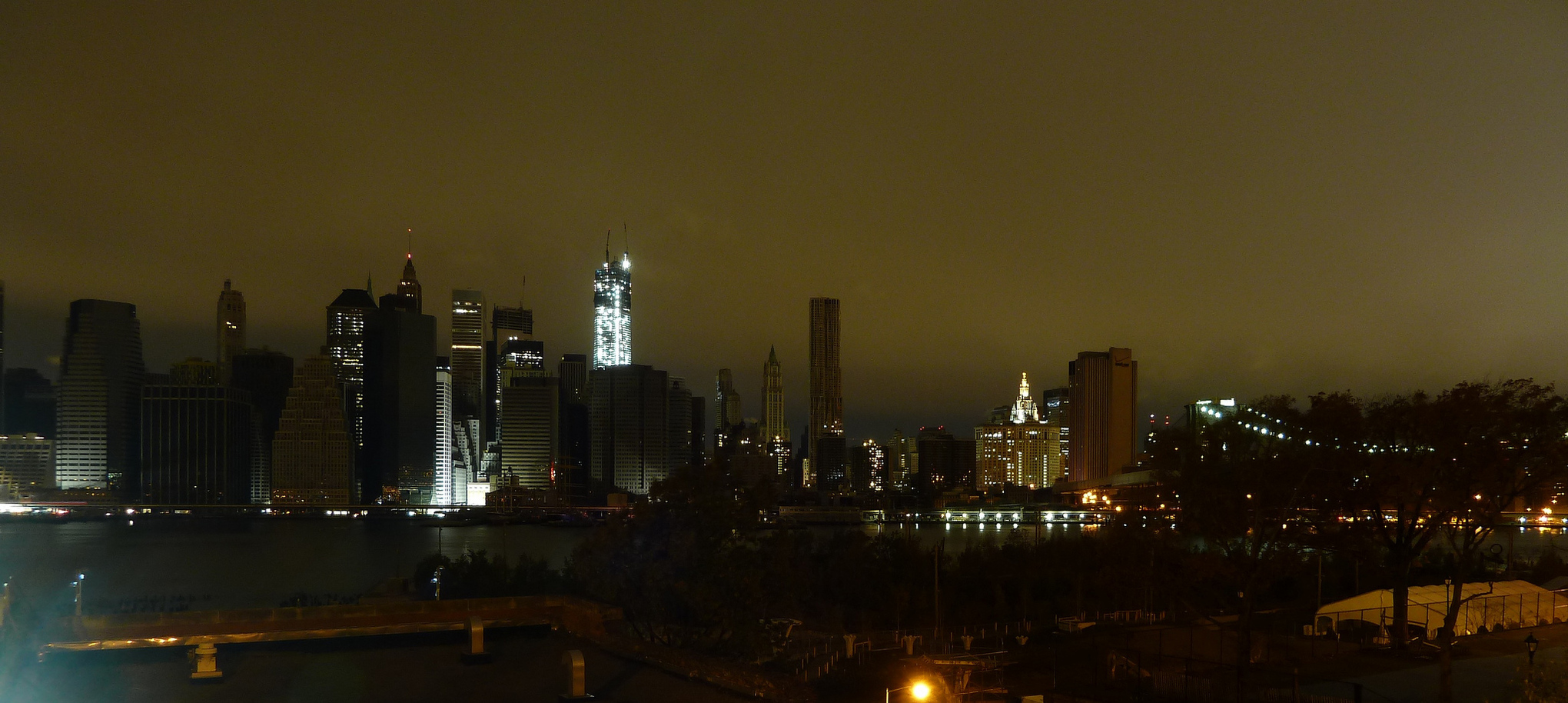
A 2012 blackout in New York City after Hurricane Sandy. (brklyn is dead/Flickr)
The biggest concern when it comes to space weather is the possibility that a solar-induced geomagnetic storm could do serious damage to our power grids.
MOST UTILITIES DON’T KEEP LOTS OF SPARE TRANSFORMERS AROUND
Here’s how this would work: At certain points in the sun’s cycle, as sunspots appear and flares erupt, the sun will occasionally eject part of its outer atmosphere — a cloud of fast-moving charged particles. If this “coronal mass ejection” hits the Earth’s magnetic field in just the right way, it can induce a strong ground current that can travel through power lines, pipelines, and telecom cables.
If those currents are large enough, they can overload electric grids — which is exactly what happened in Quebec in 1989. But a truly severe storm could fry a significant number of high-voltage transformers. Those can often take years to replace, as many weigh up to 400 tons and are custom built, with intricate supply chains. In the meantime, millions of people could go without power.
According to the Lloyd’s of London report, the Northeastern United States is one of the places most at risk, thanks to its aging power grid and unique geologic features (see map). Even a storm that knocked out just 20 key transformers would be “extremely concerning.” And in a doomsday scenario, 40 million people could go without power indefinitely.
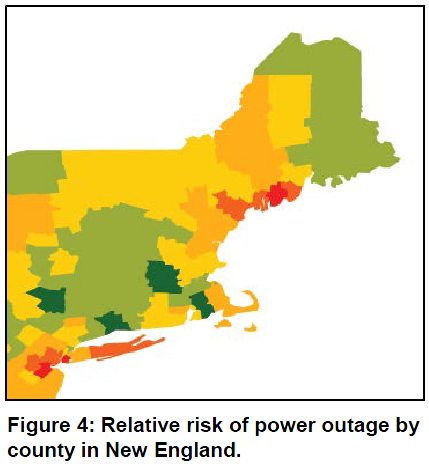
Lloyd’s of London
That wouldn’t be good. Modern society relies on electricity for a great many things — and we don’t do very well without it. One 2004 study by Carnegie Mellon University found, for instance, that a large number of Pittsburgh’s services were wildly unprepared for an extended blackout. Half the city would lose water after three days if the city’s electrical pumps couldn’t be revived. Grocery stores, gas stations and cellphone networks would be knocked out. Most hospitals have backup systems in place, but emergency rooms would be strained if the air conditioning went out during a heat wave.
“The absence of such fundamental services could lead to major and widespread social unrest, riots and theft,” the Lloyd’s report warned.
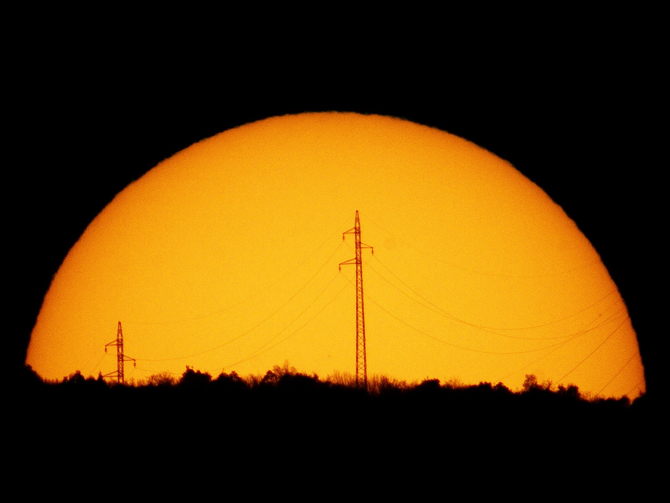
(NASA/Martin Stojanovski)
Not all is lost, though. Power utilities could try to take precautions if they had advance warning of a major solar storm headed their way. Using existing satellites, the National Weather Service’s Space Weather Prediction Center in Boulder, Colo., can detect an incoming event that’s about 30 minutes from hitting Earth.
SATELLITES CAN DETECT AN INCOMING STORM THAT’S 30 MINUTES AWAY
Grid operators would then have to react quickly. For example, PJM Interconnection operates a major portion of the US power grid from Illinois to the District, supplying power to some 60 million people. After receiving a warning, its human operators could redispatch electricity to reduce the flow of current from west to east. That would minimize the grid’s vulnerability to ground currents, Frank Koza, the executive director of operations support at PJM, said at a space weather conference in Silver Spring I attended back in June 2013.
But there’s a limit to how much strategies like those can help. “The one we’re really concerned about is extreme space weather, a Carrington-level event,” Koza said then. “What would happen in that scenario? I would have to tell you we don’t really know.”
In theory, there are technologies that could harden the grid and protect against stronger storms, such as capacitors that can help block the flow of ground currents induced by a geomagnetic event. In Quebec, the Canadian government has spent about $1.2 billion on these technologies since the 1989 blackout.
One downside is that many of these technologies are pricey and could make the current grid somewhat less efficient during normal times. “We’ve designed our power lines to work efficiently under perfect conditions — long transmission lines, high voltages,” Chris Beck of the Electric Infrastructure Security Council told me last year. Unfortunately, those characteristics also make the grid particularly vulnerable to a solar storm. There’s a trade-off.
In recent years, the federal government has started paying closer attention to the issue. In 2012, the Federal Energy Regulatory Commission issued an order that would eventually require grid operators to prepare both operational and technological responses to a space weather event. But utility executives think it could take a few years to bolster protection for the grid.
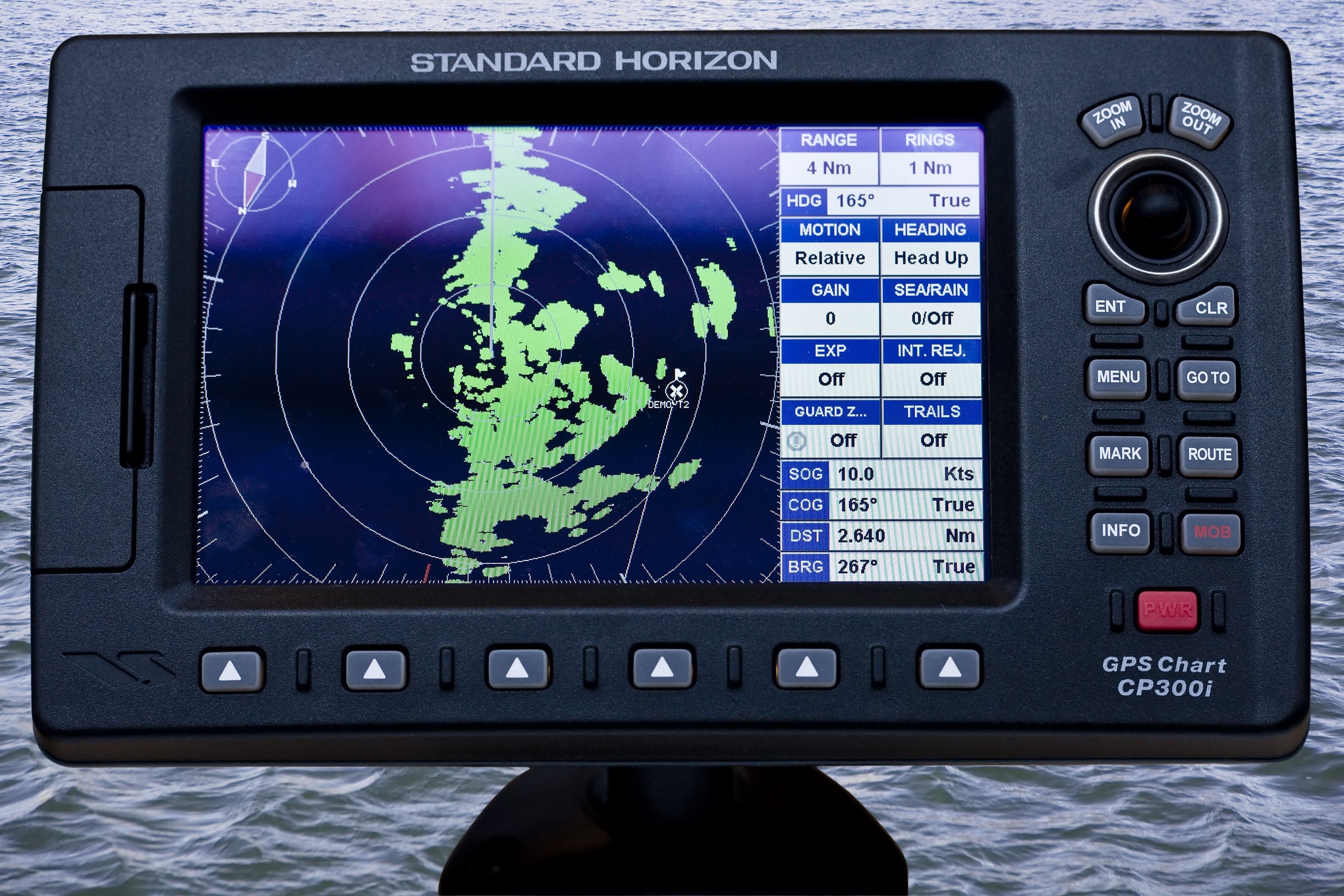
GPS, Marine chart plotter device for martime navigation. (MyLoupe/UIG via Getty Images)
The destructive blackouts get all the attention. But solar storms and space weather can create all sorts of lesser havoc as well.
GEOMAGNETIC STORMS OFTEN FORCE AIRLINES TO DIVERT FLIGHTS AWAY FROM THE POLES
Take air travel. Nowadays, airlines run a number of commercial flights over the poles, such as routes between Atlanta and Tokyo. But if the companies get a last-minute warning from the Space Weather Prediction Center of a geomagnetic storm, the planes often have to divert their routes away from the poles or risk losing radio contact with the ground. These diversions can cost thousands of dollars.
Back in 2013, Joseph Kunches, a scientist at the Space Weather Prediction Center, told me that we’re still learning about other activities that could potentially be disrupted by various types of solar weather. Satellite communications can go awry. Pipelines can corrode from ground currents. Even human space travel faces a threat.
“Radiation is a big issue for space travel — particularly once you get away from the Earth’s magnetic field,” Kunches said. Astronauts working outside the Earth’s protective shield can be particularly vulnerable to bursts of solar radiation, which can have harmful health effects. That means that if we ever got serious about, say, traveling to Mars, we’ll need a better grasp on space weather.
And there are still plenty of unknowns, such as the potential impact of solar eruptions on GPS technology. It’s possible that even solar storms could degrade the signal as it makes its way from the satellite to the ground. GPS is built into so much of the modern economy — from navigation to geophysical exploration by oil and gas companies — that any interference with those signals could prove quite costly.
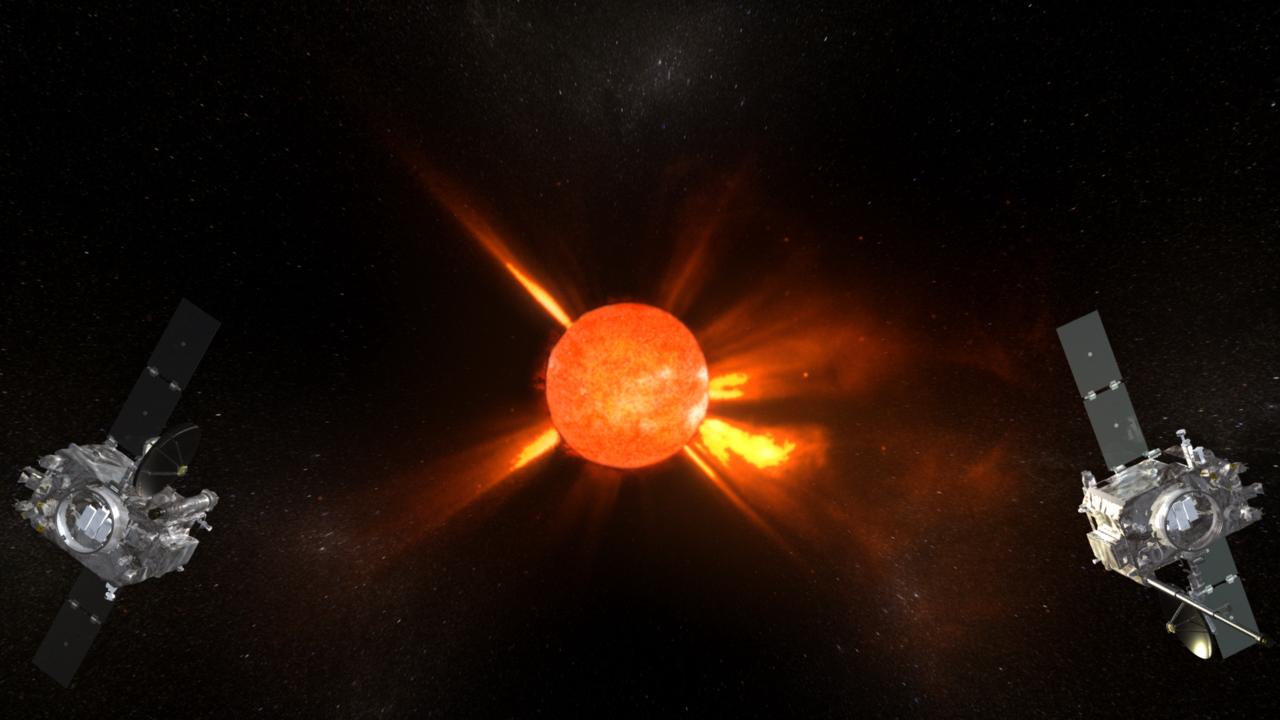
Artist’s conception of the STEREO-A spacecraft that monitors the sun. (NASA)
One big problem we face in preparing for space weather is that it’s unclear what we need to prepare for. Minor impacts and storms occur fairly often. But when might we expect a Carrington event? Or even something like the Quebec storm in 1989?
IF ANYTHING, OUR ALERT SYSTEMS ARE GETTING WORSE, NOT BETTER
In February, Pete Riley of Predictive Science Inc. published a paper in Space Weathersuggesting that the Earth has a 12 percent chance of getting hit by a Carrington-level event in the next 10 years. That’s definitely a number we’d like to pin down.
And there’s plenty more that space scientists are still trying to grasp. It’s still difficult to predict, for instance, whether a solar outburst will actually create a storm when it hits Earth. A great deal depends on how a coronal mass ejection interacts with other solar winds as it moves toward us. Kunches likened it to knowing that a hurricane is coming, but not being able to measure its barometric pressure.
Scientists who study space weather say it would be useful to have more spacecraft studying the sun, to give us more advance warning of storms. But, if anything, our alert systems are about to get worse, not better.
Right now, NASA operates four space satellites positioned between the Earth and the sun, which together can provide roughly 30 minutes’ warning of a major solar eruption. But these satellites are all reaching the end of their planned lives (and fuel tanks), and there’s only one replacement satellite scheduled to launch in 2014.
“There’s a real need for a truly operational, 24-hour-a-day, seven-day-a-week space weather observatory,” Daniel Baker of the University of Colorado told me last year. “But right now, we don’t see that coming from policymakers or the agencies that would have to step up.”
This piece was updated between Friday morning and Friday evening after the second coronal mass ejection hit Earth.
Related: watch this amazing timelapse of the view last week from the International Space Station.
![]()
 September 15, 2014
·
September 15, 2014
·  admin ·
admin ·  No Comments
No Comments
 Posted in: Others
Posted in: Others
Leave a Reply